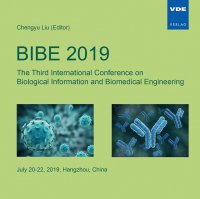Analysis of medication rule of Chinese medicine for allergic dermatitis based on association rules
Conference: BIBE 2019 - The Third International Conference on Biological Information and Biomedical Engineering
06/20/2019 - 06/22/2019 at Hangzhou, China
Proceedings: BIBE 2019
Pages: 4Language: englishTyp: PDF
Personal VDE Members are entitled to a 10% discount on this title
Authors:
Lu, Pengfei; Zuo, Ting; Bai, Ming; Miao, Mingsan (Henan University of Chinese Medicine, Zhengzhou, China)
Abstract:
Purpose: To explore the regularity of Chinese medicine in the treatment of allergic dermatitis (AD). Method: Taking Allergic dermatitis as the main subject, search the related journal literatures of CNKI(China national knowledge infrastructure), (February 1988 to December 2018), collect the prescriptions recorded in literatures, establish a database and conduct statistical analysis. Statistical software Excel 2013, SPSS Modeler 14.1 and SPSS Statistics 19.0 were used to conduct association rule analysis for the included traditional Chinese medicine. Result: A total of 61 prescriptions were included, involving 113 kinds of Chinese medicines and 618 frequencies, of which 21 Chinese medicines with frequency greater than 10. The first three were Liquorice root, Divaricate saposhnikovia root and Chinese angelica. According to the classification of efficacy, 79.78% of them were heat-clearing drugs, deficiency-tonifying drugs and surface-relieving drugs; 68.15% of them were cold, warm and calm; 90.89% of them were sweet, bitter and bitter, and most of them were liver, lung and heart according to the classification of meridians. In association rule analysis, 20 pairs of drugs with the highest association intensity were found. Conclusion: The treatment of AD is mainly composed of heat-clearing drugs, and mostly combined with tonifying deficiency drugs. We should pay attention to the development of external therapy of traditional Chinese medicine in the clinical application of AD.


